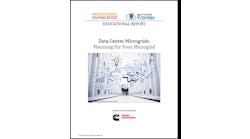Distribution feeder microgrids are about to get a closer look thanks to a $20 million grant the National Science Foundation awarded to a consortium of research institutions.
The money will go toward developing the New Mexico SMART Grid Center, a grid modernization project exploring how consumers can generate, store, and manage energy on existing electricity distribution infrastructure.
Researchers will focus on distribution feeder microgrids, a new engineering tool for utilities to better manage the bi-directional flow of energy occurring from customer-sited solar and other forms of distributed energy.
David Breecker, president of the New Mexico-based Microgrid Systems Laboratory (MSL), which made significant contributions to the grant proposal, said that utility feeder distribution microgrids represent “an extremely fertile” research area.
Scalable distribution feeder microgrids?
“Can we make the distribution feeder look and act like a microgrid, economically and functionally — and create something that is extremely deployable and scalable because it works with the existing utility infrastructure,” Breecker said in an interview.
A few examples already exist of distribution feeder microgrids, among them the Ameren microgrid in Illinois.
Creating microgrids at the distribution feeder level brings the utility in as a project partner. Microgrid technology becomes a tool for energy management rather than a competitor drawing away utility customers and possibly burdening it with stranded costs.
“If you look at the practicality of deployment, having the utilities as partners, and getting beyond grid defection, and saying let’s do this together…that’s strategically a really smart way to go,” he said.
In addition to looking at the architecture of distribution feeder microgrids, the researchers will study the implications of communications, networking and control and the corollary data analytics, machine learning and artificial intelligence. In the final stage, the team will create real-world test beds.
The expansive, five-year research effort will include 40 researchers from not only MSL, but also the University of New Mexico, New Mexico State University, New Mexico Tech, Sandia National Laboratories and Los Alamos National Laboratory. The total research budget is $24 million with $20 million from NSF and $4 million in local matching funds.
The team will set up a group of industry advisors to keep the project abreast of latest advances in technology, a crucial element given the fast pace of change underway in energy, Breecker said.
The project also will address workforce issues. Santa Fe Community College will create a workforce training program with Siemens and Public Service Company of New Mexico.
“We’re looking at what’s likely to be a workforce gap as we go through this energy transition and grid modernization process,” Breecker said.
Older workers are retiring – but that’s only part of the problem. The industry will need workers trained in new skills, systems thinking and distributed energy. “A lot of day’s linemen are going to be men and women sitting in front of computers,” he said.
Finding workers is one problem that could stymie grid modernization; bringing new energy technology to market is another, given the power industry’s array of regulations, which vary from state to state and region to region.
Regulatory maze discourages entrepreneurs
“You have an extremely complex regulatory environment that most entrepreneurs are not prepared to grapple with,” he said.
In addition, utilities function as regulated monopolies, which by their nature discourages change. “So you are dealing with a general industry culture that does not lend itself to rapid innovation,” he said.
As a result, venture capitalists and conventional investors see too much risk and shy away. So grid modnerization requires cultivation of a new kind of investor, he said, “one more in tune with this risk/return profile and is comfortable with magnitude of the investment required – which is more than developing a new mobile app for the IPhone.”
Investment potential as big as the electric grid
It takes longer to determine if an energy tech investment is successful. But on the upside the entire electric grid needs to be modernized — it’s a sizeable opportunity.
So MSL and partners have their work cut out for them — and a fortunate boost from the NSF to get them started. How can the industry help?
“We see a critical need for collaborative innovation across the areas of technology, finance, regulation, consumer behavior and education. We need to get all of those things working in a coordinated, holistic fashion,” he said. “We’ve attempted to create an architecture for that through the Microgrid Systems Laboratory. So we invite collaborators, partners, members, and funders to participate.”
Track news about emerging distribution feeder microgrids. Subscribe to the free Microgrid Knowledge newsletter.







